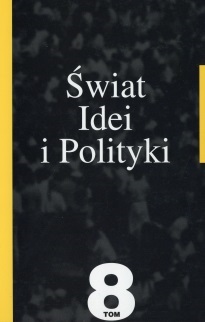Critical Theory as a method of political analysis
DOI:
https://doi.org/10.34767/SIIP.2008.08.13Abstract
The article analyses the work of a Frankfurt School, founded by Felix Weil family in 1923 in Frankfurt. Main author's intention is to make the critical theory of practical use in contemporary political analysis. The author tries to explain, how Max Horkheimer's theory (and critical discourse analysis) can be a practical tool, which can describe possibility of making a social change. The author stresses the theory's emancipation role, and demonstrates that critical theory can be an explanatory, practical and normative mode of social inquiry. Debunking and demystification of contrasts between the possible construction of life and its present state is the critical theory's main objective. To present contemporary methods of political analysis the author uses Klaus von Beyme's proposal. The author suggests that Paul K. Feyerabend is right, when he writes about science. Feyerabend's point of view is completely different from traditional theory. He has got a new idea which means for him anything goes in science, especially in social science. This article proves that immanent critic is a part of interdisciplinary studies, an idea that was regarded as a method to achieve the goal of Frankfurt School. This paper uses theoretical and analytical resources to explore processes and conflicts over efforts to present tragic events as spectacles, focusing on a case study of Hurricane Katrina. It shows who is real victims, and who is responsible for one of the biggest disaster in USA history. The author is confident, that critical analysis discourse is a very useful methodology in politics analysis. The article is used by the author in his research focused on answers to the question "How do you think, why Donald Tusk is a PM"?

